World War II veterans return to Normandy for 75th D-Day anniversary: 'You can't forget'
They traveled from as far as Las Vegas and for some, it will be a first visit.
From Alabama to Nevada, they are the modest heroes who did something extraordinary nearly 75 years ago -- fighting on D-Day with Allied troops and winning against Nazi Germany.
ABC News' "World News Tonight With David Muir" recently met with several World War II veterans across the U.S. and traveled with them as they made their journey -- some of them for the very first time -- back to Normandy, France for the 75th anniversary of that day.
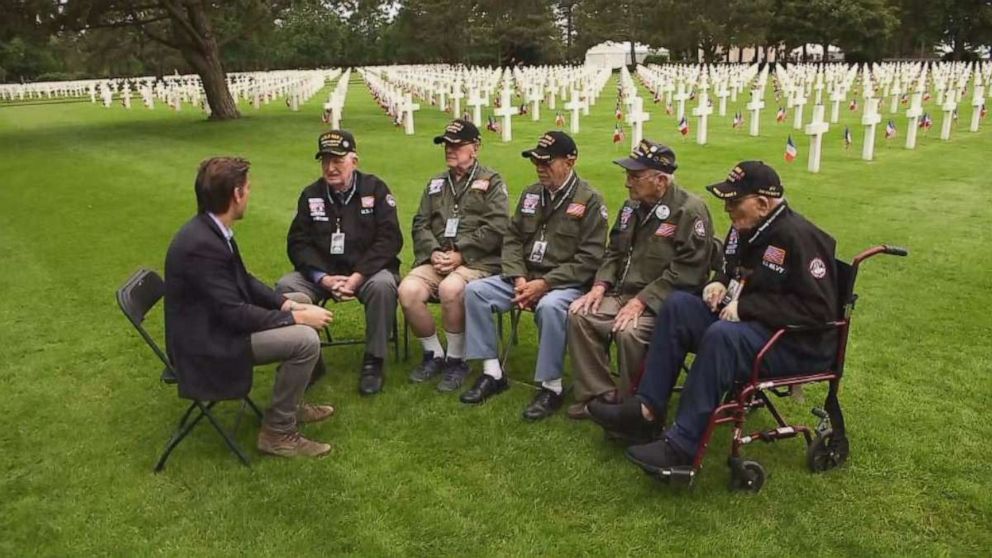
French President Emmanuel Macron awarded the Legion d’honneur, France’s highest award for merit, to five U.S. veterans, one of whom was 96-year-old Stanley Friday.
Friday was F-5, 3rd Army, 80th division. An Army scout, he fought all through France, Belgium, Luxembourg, Germany and Austria. He was charged with being ahead of the division, locating enemy troops, obstacles and determining enemy strength. He had a few hand-to-hand combat experiences and did many nighttime missions.
Friday, who grew up in King of Prussia, Pennsylvania, was given a Bronze Star.
"You can't forget," said veteran Harold Himmelsbach. "You can't forget."
On Wednesday, after meeting in Atlanta for the first time and setting off for Europe, the once young men, who had stormed the beaches, watched brothers die and bravely changed the course of the war, gathered in the Normandy American Cemetery. It's the site of the first cemetery set up by the U.S. Army two days after D-Day.
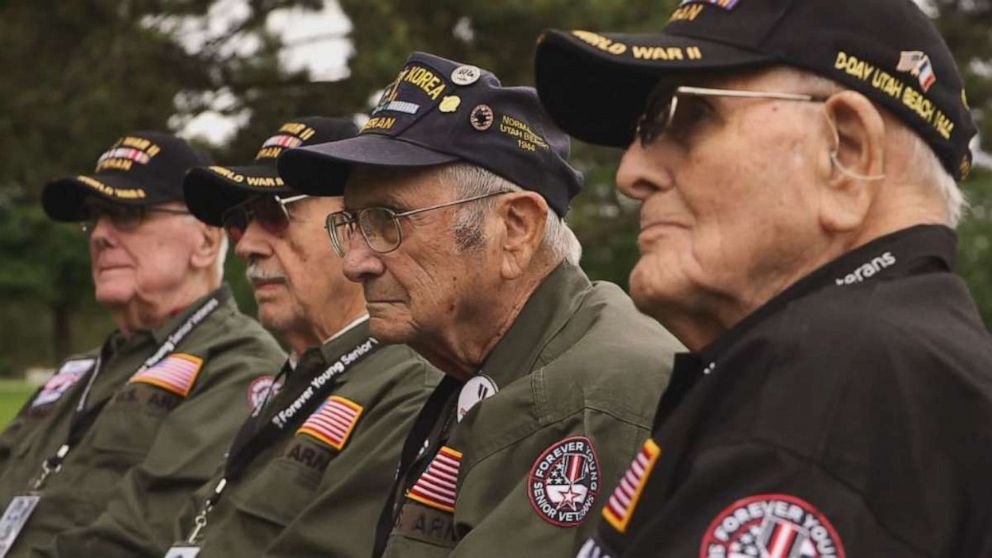
"I was wondering how I would react. .... I still am weeping within some, because I saw so many young guys that day (lose) their lives," veteran Vincent Unger said.
The U.S. veterans also returned to the beaches of Normandy, where on D-Day, June 6, 1944, Allied forces stormed the shores to liberate Europe from Hitler's Germany. Of the more than 156,000 Allied troops, more than 4,000 were killed as they reached 50 miles of Normandy coastline, which was divided into code names from West to East: "Utah," "Omaha," "Gold," "Juno," and "Sword."
One of the veterans collected sand to take back home with him.
U.S. forces sent 23,250 to Utah Beach, 34,250 to Omaha Beach and 15,500 airborne troops. Of the 4,414 Allied troops who died on D-Day, 2,501 were Americans.
It was dramatic. ... I would see other guys die within feet of me.
According to the D-Day Center, the invasion combined the forces of 156,115 U.S., British and Canadian troops; 6,939 ships and landing vessels; and 2,395 aircraft and 867 gliders that delivered airborne troops.
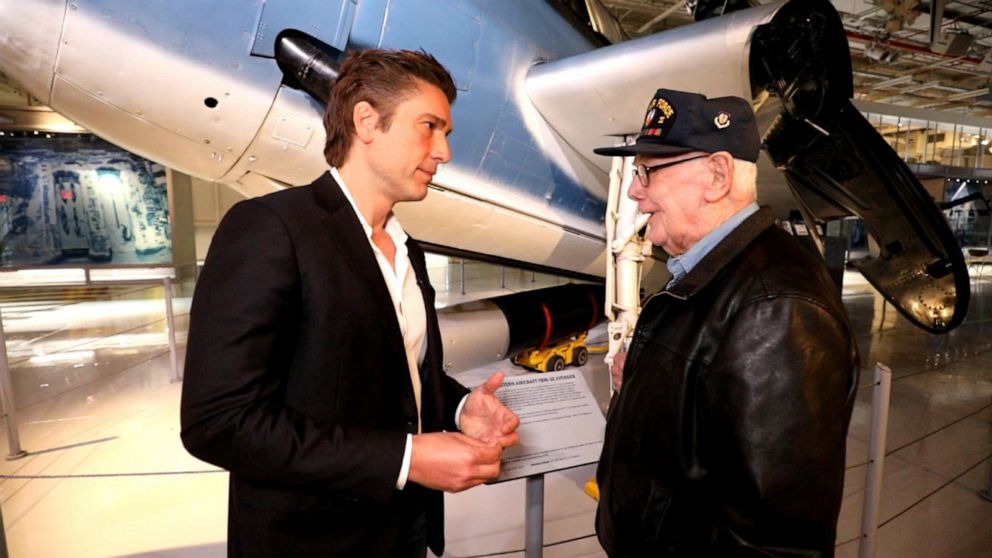
Harold Himmelsbach, 93, of El Dorado Hills, California, described D-Day to ABC News as "the most dramatic time" in his life.
"I remember best and saw things that very few people would ever see. And I saw it all. And I still remember these things," said Himmelsbach, who was born and grew up in Yakima, Washington. "It was dramatic. ... I would see other guys die within feet of me."
Everybody knew what we, we were doing. We were gonna go and defeat the Germans.
Himmelsbach, who served in the 123rd Quartermaster Truck Company Aviation, said that troops had been training for D-Day but just didn't know when it would occur.
"Everybody knew what we, we were doing. We were gonna go and defeat the Germans," he said.
On June 6, 1944, he and his unit were awakened at 3 a.m., ate breakfast on their ship and then told to get their gear.
"All of a sudden, I'm out on the deck, when the first explosions took place. So I had no gear on or anything else. I was just-- didn't even had my helmet on," he said. "All of a sudden, this explosion took place right next to us. ... And it just, of course, was a shock, obviously. And it, it just, all of a sudden, water came up over my head and, and washed over the top of us and everything. I was knocked around and down. ... It was a tremendous jolt because it was actually tearing parts of the ship open. ... The second was more violent. That was a powerful explosion, the second one. And that's why it did so much damage. ... I remember I had to pick up one guy's head, you know, 'cause he had been cut and so forth. And you almost took it as the reality of where you were. In other words, you knew you had to do these things."
Himmelsbach was just 18 years old. After the invasion, he was assigned to the 110th Infantry Regiment, 28th Infantry Division. He fought and served in D-Day, Normandy, Belgium, Germany and the Rhine River. He returned to Normandy for the 45th and 50th anniversaries.
Other World War II veterans who were traveling with him to Normandy this week shared similar realities with ABC News.
Harold McMurran, 94, of New Market, Alabama, served with the 546th Ord, as a FA, Instrument Fire Control Repairman, mostly infantry, on June 6, 1944, on Utah Beach. He fought through France and the Battle of the Bulge. He was also the recipient of the French Legion of Honor Medal.
McMurran, who was born and raised in Dora, Alabama, landed on Utah Beach during the second wave of the invasion and faced 300,000 Germans.
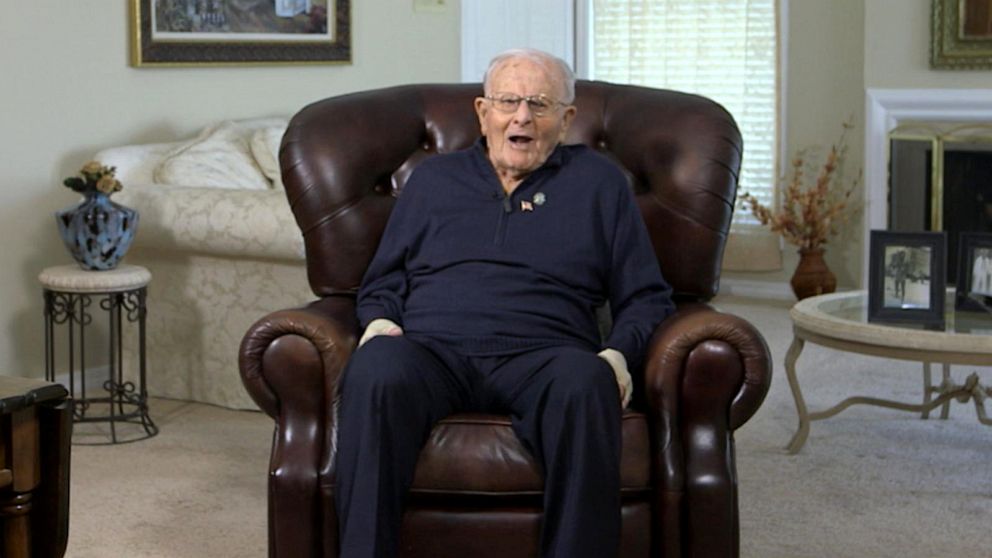
"First, I was afraid, then I was scared, and then I was numb," he said. "People say, 'How did you get off that boat and go in on that beach?' There was a job had to be done. Somebody had to do it. We did it."
He also fought in Korea. This will be his first time to Normandy.
Vincent Unger, 96, of Orlando, Florida, was among the first ones in on D-Day. He was a signalman, second class USN, with the 4th division landing infantry at Utah Beach. He was tasked with landing troops, carrying prisoners, ship communication officers. He fought with U.S. Navy Amphibians, LCI 525 and carried 4th Div. infantry to Utah Beach.
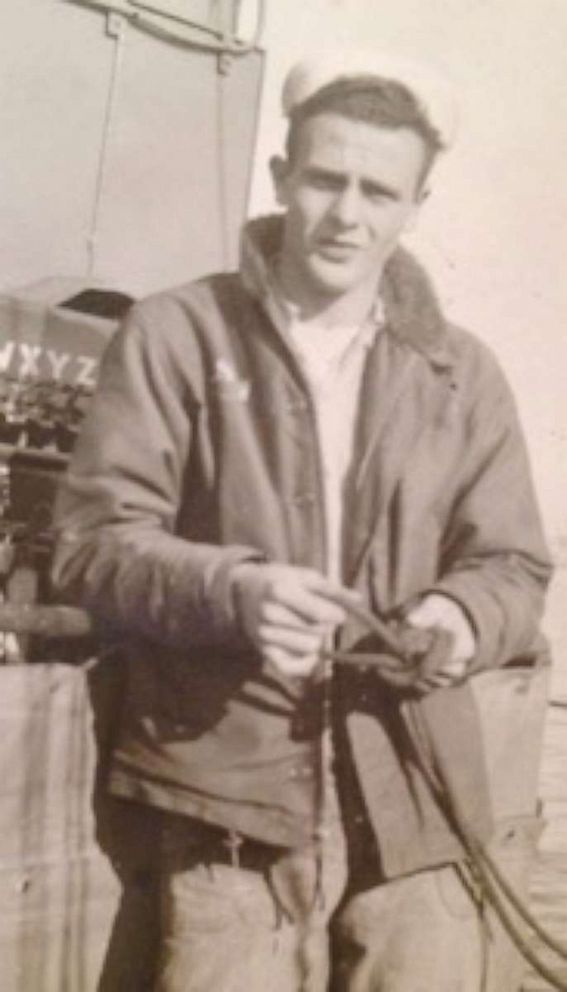
"We were the first on that beach, on Utah," said Unger, who grew up on New York's Long Island. "Terrible sound. From the canons. The bomb dropping, everything all around us. It was a fire, explosions."
"The water was from an orange to a deep red for miles, 20 miles down the coast," he said.
He also served in Northern Africa. He received good conduct medal, American Theater Medal, Victory Medal and European Theater Medal -- along with 35 stars.
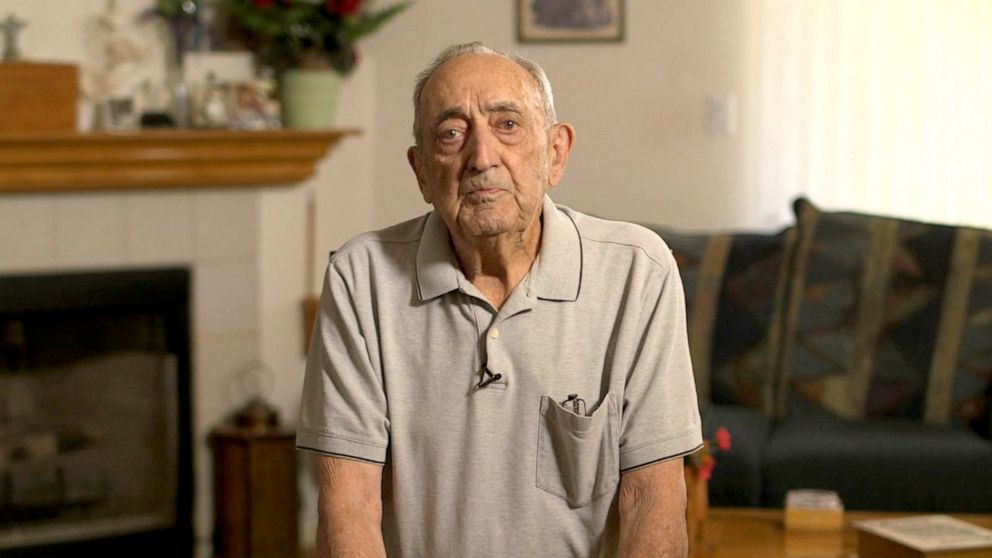
Unger returned to Normandy in 1998.
Onofrio Zicari, 96, of Las Vegas, Nevada, fought with the 5th Amphibious Brigade, 5th Wave on D-Day. He also fought through France, Belgium and Luxembourg. He enlisted in 1942 and trained in California, then was moved to Scotland and then Wales.
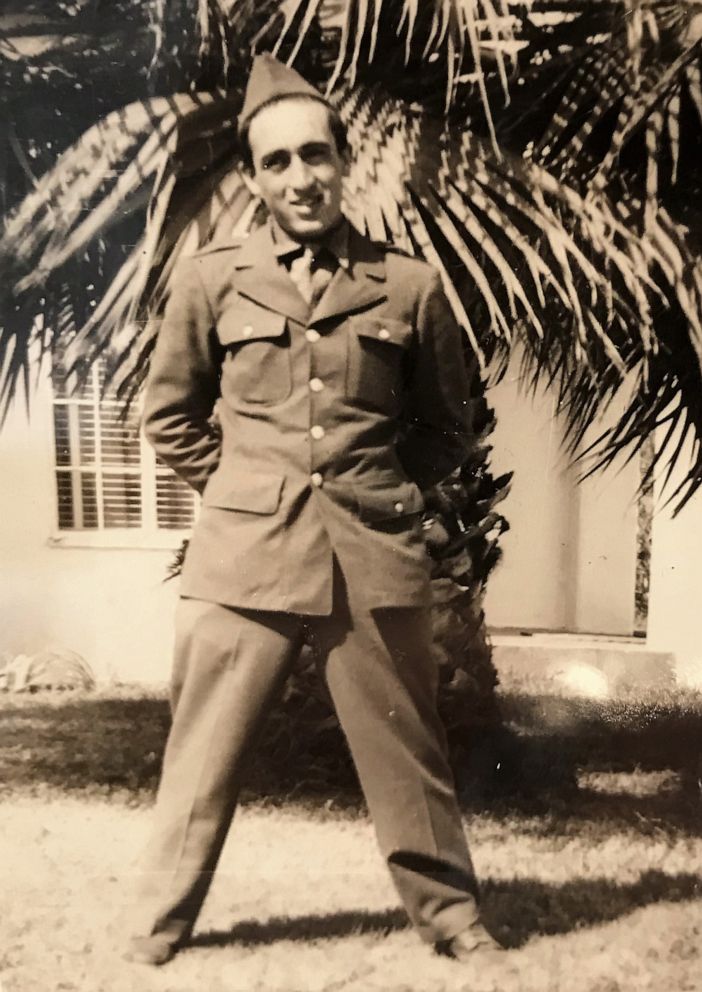
On D-Day, Zicari was on US 93, which took two direct hits. He was in charge of bringing in supplies and establishing supply lines. He fought during the Battle of the Bulge. After D-Day, he and another person in his unit got separated from their group. They were displaced soldiers when they heard the war had ended.
"Man, I was scared. I didn't realize what war was until that day," said Zicari, who was born in Geneva, New York, but grew up in Rosita, California. "It was awful. ... To this day I have flashbacks. I'll smell diesel oil (and) right away I'll think of D-Day. ... I just can't help it."
This will be his first time back to Normandy.
"I'm hopin' that goin' back to Normandy gives me closure of some kind," he told ABC News.
Man, I was scared. I didn't realize what war was until that day.
Stan Friday, 96, of Pennsborg, Pennsylvania, was F-5, 3rd Army, 80th division. An Army scout, he fought all through France, Belgium, Luxembourg, Germany and Austria. He was charged with being ahead of the division, locating enemy troops, obstacles and determining enemy strength. He had a few hand-to-hand combat experiences and did many nighttime missions.
Friday, who grew up in King of Prussia, Pennsylvania, was given a Bronze Star. He has not been back to Normandy.
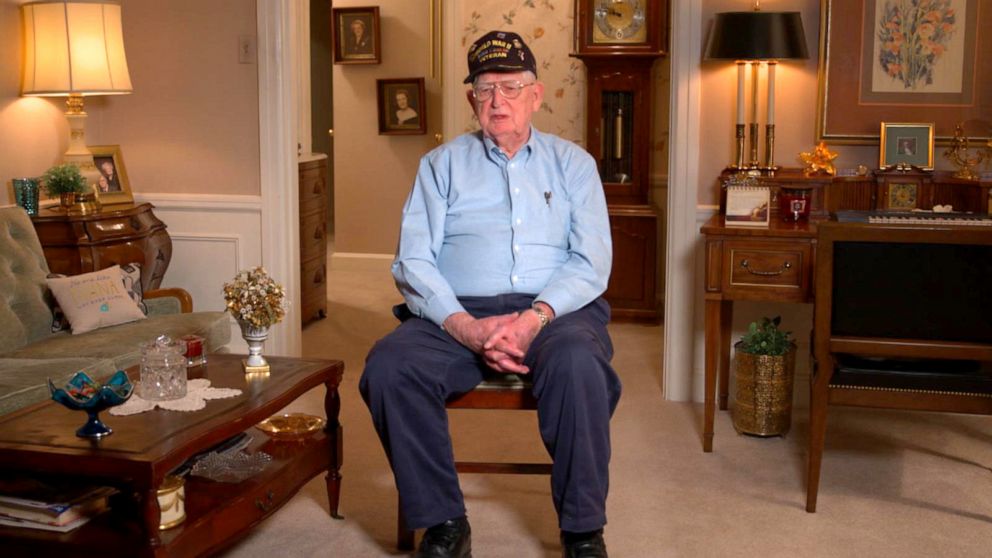
Jack Claiborne, 95, of Dyersburg, Tennessee, drove the troops to Omaha Beach on LCI 492. He was a helmsman and gunner. This will be his third trip to Normandy, having been there in 2011 and 2014.
"Seeing all of these boys that was killed, and just layin' there on the beach," he said. "It was just tough for a little old kid to handle and we were all young."
During World War II, 16 million Americans served -- 11% of all Americans at that time.
As of Sept. 30, 2018, fewer than 500,000 World War II veterans were alive. According to the U.S. Department of Veterans Affairs, 348 World War II veterans die every day.
Himmelsbach told ABC News that he remembered learning that he'd lost one of his friends on D-Day in the first explosions.
"It was just take care of your friend. And that's what we all did. ... We were all Americans," he said. "I'm very proud of being involved."
Click here for more information on the American Battle Monuments Commission, the guardian of America's overseas commemorative cemeteries and memorials, which honors the achievements and sacrifice of the U.S. Armed Forces.




